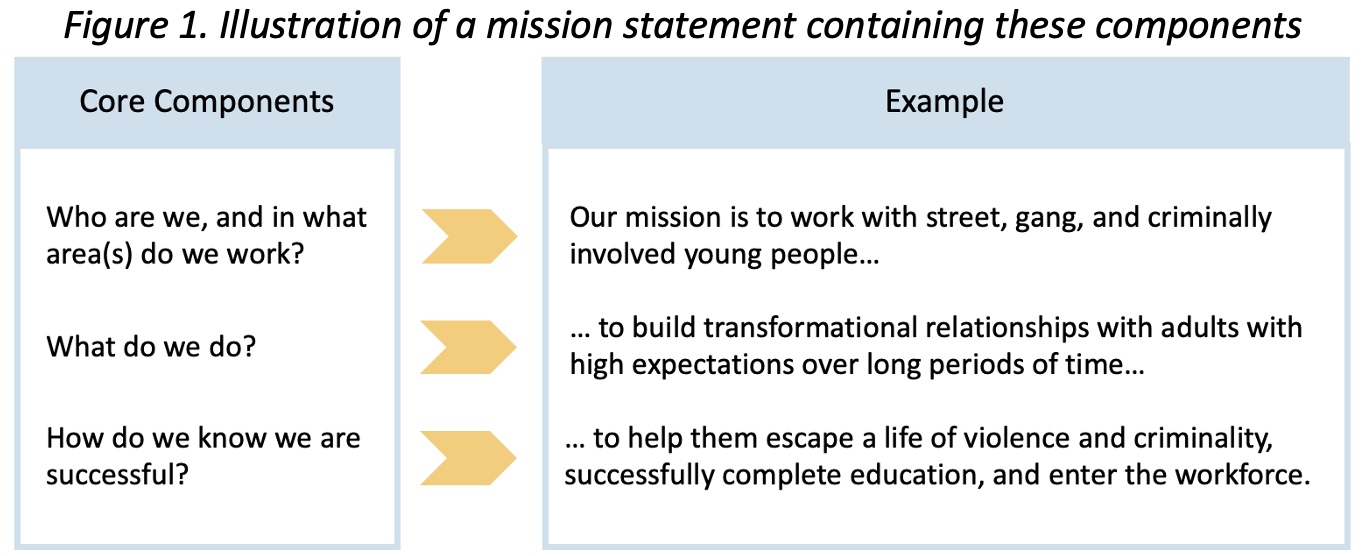The purpose of a mission statement is to explain an organization’s value proposition: what is the social value your organization creates in the world, how do you go about doing it, and how do you know if you are successful in the effort?
Signs of Room for Improvement
Your current mission statement might reflect the following:
- It might be aspirational to a degree that stretches beyond the scope of your organization’s work, undermining the mission statement’s utility in driving your work forward with intentionality;
- When asked to explain what your organization’s mission statement means, staff and board members provide a variety of responses or struggle to recall it; and/or
- One or more vague words, jargon, or terms that are not easily understood by someone from outside your organization appear within it.
These can be signs that an opportunity exists for your team to revisit and revise its mission statement through a process that helps to create alignment as well as clarity.
Strengthening Your Mission Statement
A discussion to revise your organization’s mission statement should include a vertically integrated team, including representatives from your board, executive leadership, mid-level managers, and frontline staff. Without all voices, you will lack necessary inputs and miss the opportunity to create shared understanding and commitment. You can focus a conversation that brings such a group together by exploring three key questions below to craft a mission statement that is responsive to each. An example of a mission statement built in response to these questions is available in the figure below.
- In what area(s) do we work? For a non-profit organization, the answer to this question should include identification of the target population whom the organization is in business to serve so that it can measurably improve some aspect of their lives.
- What do we do? The answer to this question should describe, at a high level, the programming your organization provides that is at the core of your work and ability to achieve outcomes for your target population.
- How do we measure success? This final question asks for your organization’s long-term outcome, which is your definition of what success looks like. If your organization does its work well, what will you deliver for the target population you serve? In identifying your long-term outcome, consider whether it can be tested and assessed, which is essential for your organization to be able to hold itself accountable.

The goal through your initial conversations should be to reach agreement at a conceptual level rather than to wordsmith in real time. But you will also find that refining word choice will illuminate underlying issues and help you to explore the implications for your work of including or omitting certain words or phrases. Once a working group convened for this purpose has reached agreement conceptually, a few participants can volunteer to take a final pass at any wordsmithing needed before circulating to the full group for approval.
An inclusive process will yield a mission statement that has buy-in from the frontline up through your board of directors. As staff internalize your new mission statement, it will become a touchstone for why they come to work every day and how they spend their time while they are there. By giving staff a message they can believe in and that they helped to create, a mission statement developed through this process can help everyone on your team to work in a united and aligned way to achieve something important in the world. And it will help you make a more clear and compelling case to external stakeholders, including funders and partner organizations, for why they should support your organization and the social value that will be produced as a result.
